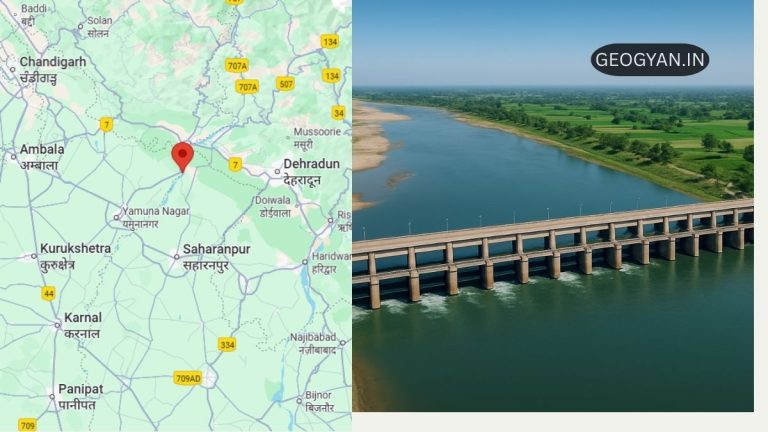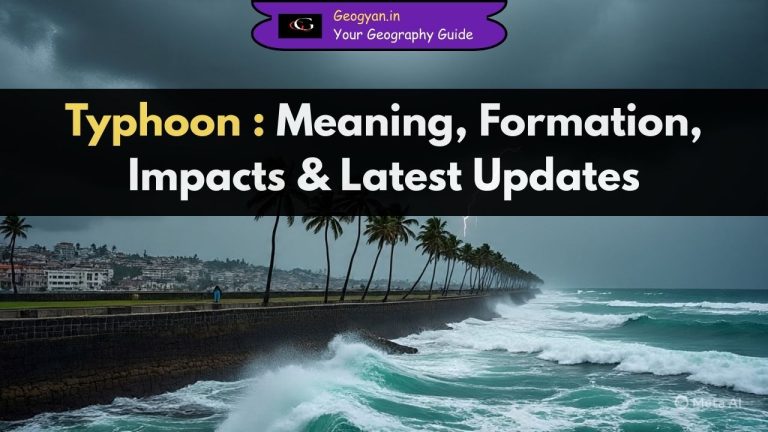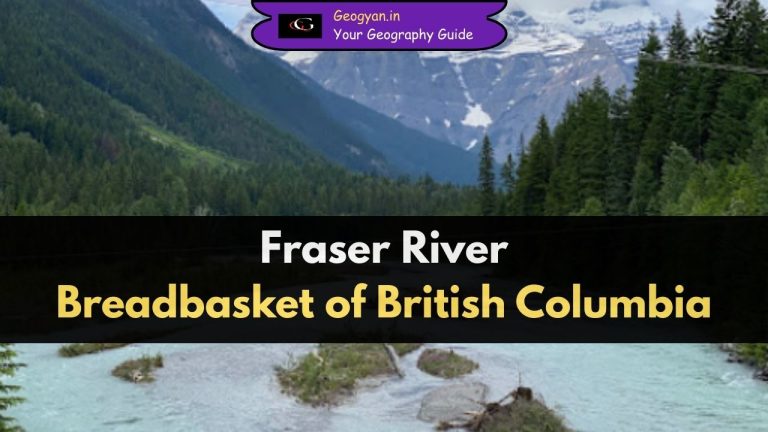Access the latest NCERT Solutions for Class 12 Geography Chapter-9: “International Trade,” updated for 2024-2025. Solution is designed to help students tackle difficult questions with ease. The content is written in simple, easy-to-understand language.
Exercise
Multiple Choice Questions
(i) Most of the world’s great ports are classified as:
(a) Naval Ports
(b) Oil Ports
(c) Comprehensive Ports (Answer)
(d) Industrial Ports
(ii) Which one of the following continents has the maximum flow of global trade?
(a) Asia
(c) Europe (Answer)
(b) North America
(d) Africa
(iii) Which one of the following South American nations is a part of OPEC?
(a) Brazil
(c) Venezuela (Answer)
(b) Chile
(d) Peru
(iv) In which of the following trade blocs is India an associate member?
(a) SAFTA
(c) ASEAN (Answer)
(b) OECD
(d) OPEC
Short Answer Questions (30 words each)
(i) What is the basic function of the World Trade Organisation?
The basic function of the WTO is to promote free and fair trade between nations by setting global trade rules, reducing tariffs, and resolving trade disputes between member nations.
(ii) Why is it detrimental for a nation to have a negative balance of payments?
A negative balance of payments indicates that a country is importing more than it exports, leading to financial deficits, depleting foreign reserves, and potential economic instability.
(iii) What benefits do nations get by forming trading blocs?
Trading blocs allow member countries to enjoy reduced tariffs, increased trade opportunities, economic cooperation, and better access to each other’s markets, leading to enhanced economic growth.
Long Answer Questions (150 words each)
(i) How are ports helpful for trade? Give a classification of ports on the basis of their location.
Ports are vital gateways for international trade, facilitating the movement of goods and services between countries. They handle docking, loading, unloading, and storage of cargo. Ports also enable the efficient transportation of goods, contributing to economic growth by connecting countries and boosting commerce.
Ports can be classified based on their location:
1. Inland Ports: Located away from the coast and connected to the sea via rivers or canals, e.g., Kolkata (India).
2. Out Ports: Deepwater ports serving main ports that cannot accommodate large ships, e.g., Piraeus (Greece).
3. Coastal Ports: Located directly on the coastline and handle cargo directly from ships arriving from the sea.
(ii) How do nations gain from International Trade?
Nations gain from international trade through access to a larger variety of goods and services, the ability to sell products in global markets, and the potential to specialize in the production of goods in which they have a comparative advantage. This specialization leads to efficiency and higher productivity, enabling countries to generate more wealth and improve living standards. Additionally, international trade fosters innovation, competition, and diplomatic relations between nations, contributing to global economic stability and development.
Based on Chapter 9, “International Trade,” from the NCERT Class 12 Geography book, here are some important short answer type questions with simplified answers, focusing on topics relevant to previous years’ NCERT exams and the UPSC.
Other Important Short Answer Questions
1. What is international trade, and why is it important?
Answer: International trade is the exchange of goods and services between countries across national borders. It is important because no country can produce all the resources it needs. It allows countries to obtain resources or products that are unavailable or cheaper in other countries, promotes economic growth, and fosters global cooperation.
2. What were the difficulties of the barter system in trade?
Answer: The barter system involved the direct exchange of goods without using money. The difficulties included the need for a “double coincidence of wants” (finding someone who had what you needed and needed what you had), the challenge of setting the value of goods, and the impracticality of transporting bulky or perishable items.
3. What led to the growth of international trade during the Industrial Revolution?
Answer: The Industrial Revolution led to a high demand for raw materials like coal, metals, and agricultural products. Industrialized nations needed these inputs to produce finished goods, which were then exported. Improved transportation, such as railways and steamships, facilitated the faster and cheaper movement of goods, boosting international trade.
4. Explain the concept of balance of trade.
Answer: Balance of trade is the difference between the value of a country’s exports and imports. A positive balance (trade surplus) occurs when exports exceed imports, while a negative balance (trade deficit) happens when imports exceed exports. A negative balance can lead to economic problems, as it means the country spends more than it earns.
5. How does population size and distribution affect international trade?
Answer: Densely populated countries tend to have large domestic markets, reducing the need for imports and increasing internal trade. In contrast, sparsely populated or resource scarce countries may rely more on international trade to meet their needs. Additionally, the standard of living influences demand for foreign goods; wealthier populations are more likely to import high quality products.
6. What is dumping in international trade, and why is it a concern?
Answer: Dumping occurs when a country exports goods at a price lower than their cost of production or below the market price in the exporting country. It is a concern because it can harm domestic industries in the importing country, leading to unfair competition and potential job losses.
7. What are the main types of international trade agreements?
Answer: The two main types of international trade agreements are:
- Bilateral trade agreements: These are agreements between two countries to trade specified goods or services.
- Multilateral trade agreements: These involve more than two countries and often grant the status of “Most Favored Nation” (MFN) to ensure fair trade among participants.
8. How do transportation advancements influence international trade?
Answer: Advances in transportation, such as container shipping, air transport, and improved logistics, have made the movement of goods faster, cheaper, and more efficient. These developments have expanded global trade networks, allowing goods to be traded over long distances and in larger volumes.
9. What are regional trade blocs, and why do countries form them?
Answer: Regional trade blocs are groups of neighboring countries that form an agreement to facilitate trade by reducing tariffs and other trade barriers among themselves. Countries form these blocs to encourage regional economic cooperation, increase trade, and strengthen their collective economic position in global markets.
10. What role does the World Trade Organization (WTO) play in international trade?
Answer: The WTO sets global rules for trade between nations. It aims to promote free and fair trade by reducing trade barriers, resolving disputes between member nations, and overseeing the implementation of trade agreements. The WTO also deals with issues like trade in services, intellectual property rights, and nontariff barriers.
Multiple Choice Questions (MCQs
Based on Chapter 9, “International Trade,” from the NCERT Class 12 Geography book, here are 20 multiple choice questions (MCQs) with answers at the end. These questions are relevant to both previous NCERT exams and UPSC patterns.
1. What is the primary reason for the existence of international trade?
a) Difference in culture
b) Specialization in production
c) Globalization
d) Technological advancement
2. Which of the following statements defines bilateral trade?
a) Trade between two countries
b) Trade between multiple countries
c) Trade of manufactured goods only
d) Trade of agricultural products
3. Which trade system was used in ancient societies before the invention of money?
a) Industrial trade
b) Barter system
c) Colonial trade
d) Multilateral trade
4. The Silk Route is an example of:
a) Colonial trade
b) A military route
c) Long Distance trade
d) A modern trade bloc
5. Which of the following nations is NOT a part of the Commonwealth of Independent States (CIS)?
a) Russia
b) Kazakhstan
c) India
d) Ukraine
6. In which century did European colonialism lead to the emergence of slave trade?
a) 12th century
b) 15th century
c) 18th century
d) 19th century
7. Which factor does NOT influence international trade?
a) Geological structure
b) Climate
c) Population size
d) Language
8. What does a negative balance of trade indicate?
a) Exports are higher than imports
b) Imports are higher than exports
c) Equal value of imports and exports
d) A self sufficient economy
9. Which organization was established in 1995 to regulate global trade?
a) International Monetary Fund (IMF)
b) United Nations (UN)
c) World Trade Organization (WTO)
d) World Bank
10. What is “dumping” in international trade?
a) Selling goods at higher prices abroad
b) Selling goods below cost in foreign markets
c) Importing goods at a lower price
d) Taxing foreign goods
11. Which trade bloc is associated with the North American region?
a) ASEAN
b) SAFTA
c) NAFTA
d) CIS
12. What is the function of an entrepôt port?
a) Processing and refining oil
b) Manufacturing goods
c) A collection center for re exporting goods
d) A naval base
13. Which one of the following continents has the maximum flow of global trade?
a) Asia
b) Africa
c) North America
d) Europe
14. What is the primary role of ports in international trade?
a) Agriculture
b) Storage of goods
c) Manufacturing
d) Facilitating cargo transport and docking
15. Which country was NOT a founder member of the WTO?
a) India
b) USA
c) China
d) UK
16. Which trade bloc is India associated with as an associate member?
a) ASEAN
b) SAFTA
c) OPEC
d) OECD
17. Which of the following is a key commodity traded by OPEC countries?
a) Coffee
b) Petroleum
c) Textiles
d) Automobiles
18. What is the significance of the balance of payments for a country?
a) Measures tourism revenue
b) Records trade and financial transactions
c) Tracks domestic investments
d) Calculates foreign aid
19. Which of the following is considered a comprehensive port?
a) Singapore
b) Dover
c) Athens
d) Kochi
20. What is the role of regional trade blocs in global trade?
a) Limit trade within continents
b) Encourage trade by reducing tariffs within member countries
c) Discourage free trade
d) Promote only agricultural trade
Answers
1. b) Specialization in production
2. a) Trade between two countries
3. b) Barter system
4. c) Long Distance trade
5. c) India
6. b) 15th century
7. d) Language
8. b) Imports are higher than exports
9. c) World Trade Organization (WTO)
10. b) Selling goods below cost in foreign markets
11. c) NAFTA
12. c) A collection center for re exporting goods
13. d) Europe
14. d) Facilitating cargo transport and docking
15. c) China
16. a) ASEAN
17. b) Petroleum
18. b) Records trade and financial transactions
19. a) Singapore
20. b) Encourage trade by reducing tariffs within member countries
Other Chapter
| Chapter 1:- Human Geography: Nature and Scope | Chapter 2:- The World Population: Distribution, Density and Growth |
| Chapter 3:- Population Composition | Chapter 4:- Human Development |
| Chapter 5:- Primary Activities | Chapter 6:- Secondary Activities |
| Chapter 7:- Tertiary and Quaternary Activities | Chapter 8:- Transport and Communication |
| Chapter 10:- Human Settlements |





























